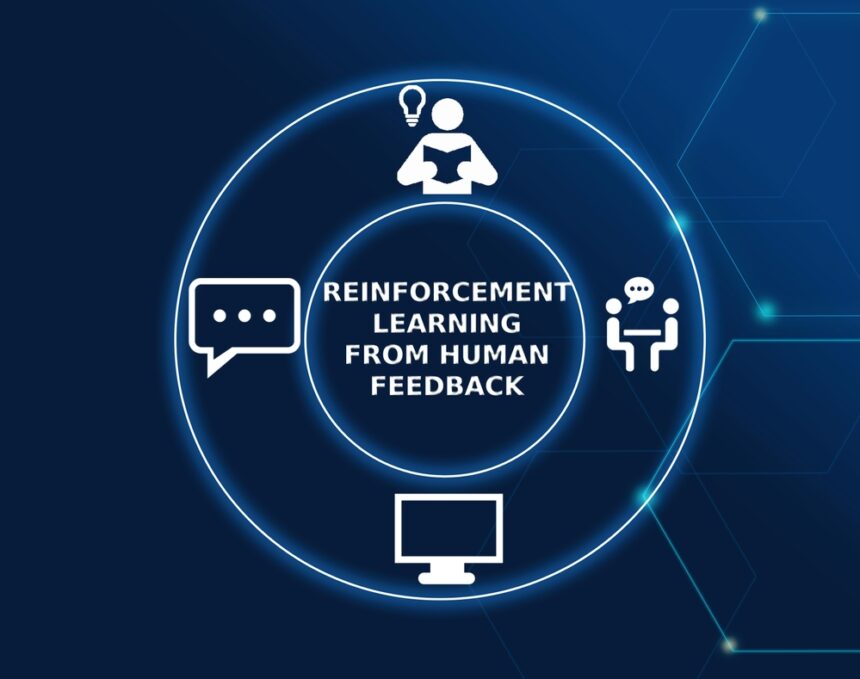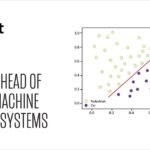Large language models (LLMs) have revolutionized AI applications, yet their raw outputs miss the nuanced judgment humans expect. Reinforcement Learning from Human Feedback (RLHF) has become the gold standard for transforming unpredictable models into reliable assistants. However, implementing RLHF presents significant challenges that can derail even well-funded projects.
Understanding Reinforcement Learning from Human Feedback RLHF
Reinforcement learning from human feedback marks a paradigm shift in how LLMs are trained. Traditional pre-training methods rely on massive text datasets to teach models language patterns, but RLHF introduces a crucial human element to align model behavior with human values and preferences. The process involves training a reward model using human feedback data, then using this reward model to guide the language model’s behavior through reinforcement learning techniques.
The RLHF pipeline typically consists of three main stages: supervised fine-tuning on demonstration data, reward model training using human preference comparisons, and policy optimization to reinforce favorable outputs. This human-centric approach allows models to learn not just what to say, but how to say it appropriately, helpfully, and safely. The result is AI systems that can engage in more natural, contextually appropriate conversations while avoiding harmful or inappropriate outputs.
Top RLHF Challenges
Data Quality and Annotation Consistency
One of the most significant hurdles in RLHF implementation lies in maintaining consistent, high-quality human annotations. Human preferences are inherently subjective, and different annotators may have varying opinions about what constitutes a “good” response. This subjectivity can lead to inconsistent training signals that confuse the model and degrade performance. Also, preference annotation is mentally intensive work, often leading to annotator fatigue and decreased accuracy over time.
Scalability and Resource Constraints
RLHF involves extensive human participation throughout the training process, making it resource-intensive and difficult to scale. Organizations must recruit, train, and manage large teams of annotators while ensuring consistent quality across thousands of preference judgments. The computational demands for RLHF training are also substantial, and specialized infrastructure and expertise are needed, which many organizations lack.
Reward Model Limitations
The reward model is at the heart of RLHF, yet it often becomes a bottleneck in the training process. These models must accurately capture complex human preferences based on limited comparison data, which can lead to overfitting or misrepresenting human values. When reward models fail to generalize properly, they can guide the language model toward behaviors that game the reward system rather than genuinely improving performance.
Distribution Shift and Generalization
As models are trained using RLHF, they may drift away from their original training distribution, leading to unexpected behaviors in novel situations. This distribution shift can cause models to perform well on training scenarios but fail when encountering real-world use cases that differ from the annotation environment. Maintaining robust performance across diverse contexts remains a significant challenge.
Bias and Fairness Concerns
Human annotators bring their own biases and cultural perspectives to the annotation process, which can become embedded in the trained model. These biases may lead to unfair treatment of certain groups or topics, creating ethical concerns about the deployed AI system. Detecting and mitigating these biases requires careful attention to annotator diversity and comprehensive evaluation frameworks.
How to Navigate Common RLHF Challenges
Implement Robust Quality Control Measures
Establishing comprehensive quality control processes is essential for maintaining annotation consistency. It includes developing clear annotation guidelines, implementing multi-annotator review systems, and regularly calibrating annotator performance. Regular training sessions and feedback loops help maintain high standards throughout the project lifecycle.
Leverage Domain Expertise
Utilizing annotators with specific domain knowledge can significantly improve the quality and relevance of human feedback. Domain experts can provide more nuanced judgments about technical accuracy, appropriateness, and contextual relevance that general annotators might miss. This specialized knowledge becomes particularly valuable when training models for specific industries or use cases.
Design Comprehensive Evaluation Frameworks
Developing robust evaluation methodologies that go beyond simple accuracy metrics is essential for assessing RLHF performance. It includes testing for bias, fairness, and generalization across diverse scenarios. Regular evaluation checkpoints throughout the training process help identify and address issues before they become deeply embedded in the model.
Adopt Iterative Training Approaches
Rather than treating RLHF as a one-time process, implementing iterative training cycles allows for continuous improvement and adaptation. The approach enables teams to refine their methods based on observed performance and emerging challenges, leading to more robust and reliable models over time.
Invest in Specialized Tools and Infrastructure
Utilizing purpose-built platforms and tools designed for RLHF workflows can significantly reduce implementation complexity and improve efficiency. These tools can automate routine tasks, provide better annotation interfaces, and offer sophisticated quality control mechanisms that would be difficult to implement in-house.
Discover RLHF Automation Services from iMerit
Navigating RLHF implementation doesn’t have to be overwhelming. iMerit’s comprehensive RLHF automation services combine domain expertise with advanced technology to optimize model performance. Our approach leverages experienced specialists who deliver quality control and data correction through custom scoring parameters. We ensure model alignment with your specific policies and objectives while deploying human-in-the-loop processes through our Ango Hub platform.
Ready to transform your model’s performance? Contact our experts today to discover how we can help you achieve your AI alignment goals!
References:
https://imerit.net/solutions/generative-ai-data-solutions/rlhf-services/
https://imerit.net/resources/blog/what-is-supervised-fine-tuning-sft/
https://openreview.net/forum?id=jwh9MHEfmY
https://imerit.net/resources/case-studies/rlhf-for-ai-co-pilot/
https://imerit.net/solutions/domain-expert-services-rlhf-sft/
https://imerit.net/solutions/generative-ai-data-solutions/red-teaming/
https://imerit.net/solutions/generative-ai-data-solutions/rag-fine-tuning/
https://imerit.net/products/ango-workflow-automation-by-imerit/
https://imerit.net/contact-us/



























